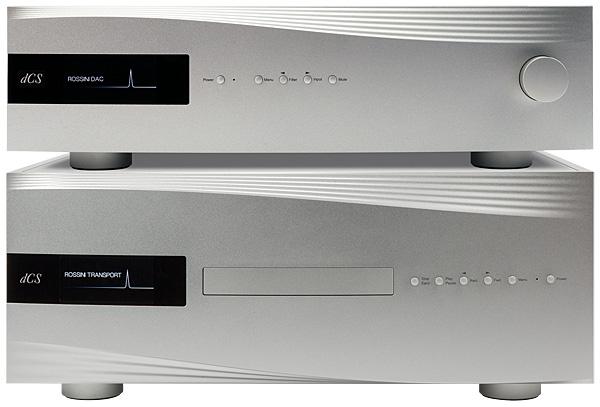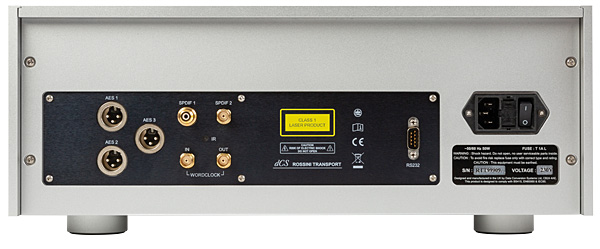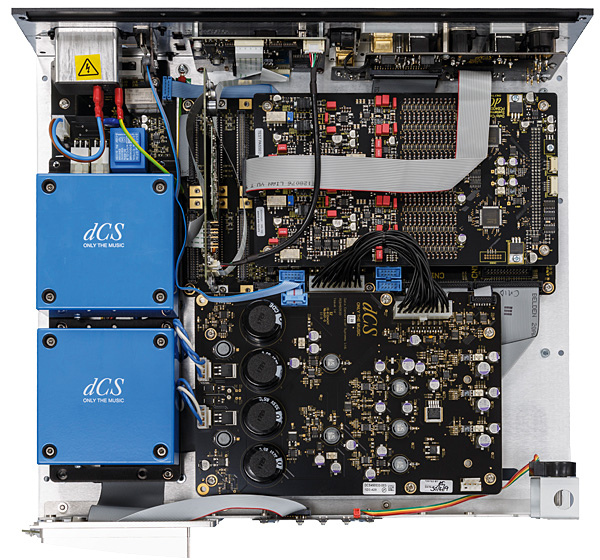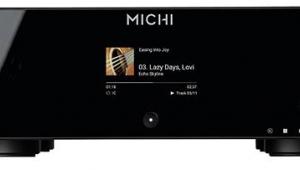dCS Rossini Transport/DAC v2 SACD Transport/DAC

 The high-tech Cambridgeshire company has added a dedicated CD/SACD transport to its Rossini range – and it, and the updated DAC, are remarkably flexible devices
The high-tech Cambridgeshire company has added a dedicated CD/SACD transport to its Rossini range – and it, and the updated DAC, are remarkably flexible devices
AdCS Rossini CD player? Doesn't the company already have one of those, usable as either a standalone device or as a transport for its range of digital-to-analogue converters? Well yes, and the Rossini Player continues in the range as a pure Red Book device because, at the time it was developed, dCS was unable to source a suitable SACD/CD combination transport.
Now, however, all that's changed, and the new dCS Rossini Transport's dual laser mechanism will handle both kinds of silver disc, but – as the name suggests – this is a purely digital device. It has no onboard DACs, but does feature built-in upsampling for CDs all the way to DSD/DXD output. It will set you back £16,500, while the partnering Rossini DAC, now running updated firmware and also able to upsample 44.1kHz/16-bit to DSD/DXD, is £17,089. So you have a choice: a one-box CD-only Rossini at £19,999 or this two-box CD/SACD-playing package knocking on the door of £34,000.
Punching The Clock
If you decide to add to the stack the Rossini Clock, which takes over master clock duties from the transport/DAC's internal provision, you can up the ante to just under £40,000. But before you gasp 'For a disc player?' (too late?), that's not quite the whole story, as the DAC also doubles as a network audio machine, with the ability to play not just from local storage but also online streaming services, utilising the dCS Mosaic streaming interface launched at this year's Munich High End Show. What's more, the DAC can also be used as preamplifier connected directly to a power amp or a pair of active loudspeakers.

That makes the DAC a perfectly viable one-box solution for those who have moved on from playing discs and into music from files or even streaming – it's capable of handling content at up to 384kHz/24-bit and DSD128, and can upsample content in lower formats up to those maxima. It's compatible with Spotify Connect, Deezer and Tidal, has MQA decoding built-in (as of the current v2.0 firmware), and is also Roon-ready, the last of these also opening it up to playing hi-res music streams available via the Qobuz Studio and Sublime+ services, as does dCS's own Mosaic platform.
The latest Rossini DAC can also play from USB media via USB-A as well as network sources, has a USB-B asynchronous port for direct connection from a computer or similar device, and legacy S/PDIF digital inputs – two coax and one optical. Apple AirPlay is also supported via the network connection, which is on Ethernet with a second loop-through connection to share the connection with other devices.

The preferred dual-AES/EBU input, on a pair of XLRs, will accept PCM at up to 384kHz and DSD64/128 in DoP format or dCS-encrypted native DSD. The last of these meets the SACD standard requirement that data must be transmitted, box to box, in a protected format, which is a slightly archaic anti-piracy measure given that it's now perfectly possible to rip SACD discs to DSD files with the right software and hardware, should one be so inclined.
Conversion Conundrum
As an aside, it's worth noting that, when using the Rossini Transport with the DAC to play SACDs, the transmission is carried in an encrypted DSD format whichever settings you choose on the disc player. You can play CDs and elect to upconvert them in the Transport to DXD or even DSD, but they will default back to encrypted DSD when you switch to the SACD layer of a disc.
Once in the DAC, the signal – whatever its source – can be upsampled: the standard is multistage DXD conversion, with an option of PCM-to-DSD if required. There's also a selection of filter settings available, offering subtle tailoring of the sound, with up to six modes available for PCM-based content, one for MQA, and five for DSD.

As ever, the choice of these filters will be a matter of personal taste, and I found the differences between the 'PCM' filters to be so small as to be inconsistent depending on the content being played. The DSD filters, which affect the suppression of out of band noise, did have a more obvious effect of gradually softening the sound. As I said, this is one section of the DAC with which to experiment, but a neat feature, should you find a setting that works for you, is that this choice will be memorised for the content sampling rate in use.
The analogue outputs on the Rossini DAC extend to both RCAs and balanced XLRs, with the maximum level adjustable in the menu system depending on its role in your system – full level can be set to 0.2, 0.6, 2 or 6V. By contrast with all the flexibility on offer in the DAC, the Transport is relatively simple – well, apart from those upsampling options for CD playback, which duplicate those found on the DAC. These allow for CDs to be replayed via encrypted DSD64, DXD, or DSD128 via DoP, using the twin AES/EBU outputs, while a single AES/EBU or S/PDIF sees CD and SACD output by default as 44.1kHz/16-bit PCM.
Driving Lessons
On both units a minimal array of buttons accesses the menu and allows adjustments to be made. The various pictograms take some familiarisation, but the complexity reflects the wide range of facilities on offer here, which even extend to phase, channel swap and balance on the analogue outputs. You can even log into the DAC using a computer on the same network, or use the Mosaic app, and change the name of the inputs and even the DAC itself – should you find yourself with a network and a number of attached Rossini devices.
























































